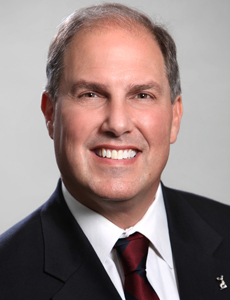
The shocking findings of a latest examine problem frequent assumptions about employees’ comp outcomes — and reveal the true extent of biopsychosocial elements’ affect.

A brand new white paper evaluation from Dr. Gerry Stanley of Harvard MedTech and Dr. Adam Seidner of The Hartford signifies that our assumptions concerning the typical employees’ comp affected person could possibly be all incorrect, and that we’re poised for a revolution in desirous about how we deal with them.
The white paper — “Is Staff’ Compensation Driving an Epidemic of Healthcare Outcomes Disparity?” — is predicated totally on two giant research evaluating lumbar and cervical backbone surgical procedure sufferers, which had been revealed in The Journal of Neurosurgery: Backbone.
Each of them reviewed the High quality Outcomes Database for the surgical procedures throughout cohorts of sufferers, which had been divided between industrial well being and employees’ compensation, and managed for quite a lot of confounding variables.
In keeping with Seidner and Stanley, “the outcomes point out that sufferers throughout the employees’ compensation system carried out considerably worse, regardless of having fewer medical comorbidities and being a youthful, more healthy inhabitants on the time of their surgical intervention than their industrial counterparts.” The one side wherein employees’ comp sufferers had been faring worse, health-wise, was smoking, however that was it — their comorbidities had been truly decrease, difficult typical knowledge.
This evaluation is spectacular resulting from each these essential findings and in addition the standard of the information, which included over 36,000 surgical circumstances. Why, then, are employees’ comp sufferers not therapeutic the best way they need to?
Seidner and Stanley argue that it’s all right down to the psychosocial danger elements in comp, that are poorly managed.
The Proper State of Thoughts

Adam Seidner, chief medical officer, The Hartford
“The psychosocial facets is perhaps weighted heavier than the comorbidities or different medical situations that the person has,” Seidner defined. “We all the time prefer to see these optimally managed, however there’s various points right here. In the event that they bought damage at work, they’re going to take a look at work a bit in a different way.”
In keeping with Seidner, what are generally known as “yellow flags” have to be high of thoughts for adjusters as they work on the “why” of every affected person’s potential points when that affected person is authorised for surgical procedure. These embody three frequent points: concern avoidance, perceived injustice and catastrophic pondering.
He famous that there’s screening for all of those, and that “we’ve got alternatives for well being coaches and different help to assist them get via this — every thing from varied web sites which can be on the market to assist folks, apps and rising applied sciences. Each one is a bit completely different. We have to perceive the worker and perceive our sufferers in addition to attainable. And that features what their expectations are. Generally, we’ve got to handle these expectations.”
Seidner added that expectation administration isn’t crucial solely among the many catastrophic thinkers — it’s additionally important to speak down sufferers who might consider surgical procedure as a silver bullet that can restore them to performance lengthy gone resulting from pure getting old or illness processes.
Unraveling the Confounding Components
The truth that employees’ comp sufferers are literally more healthy is definitely the primary concern that ought to have the trade scratching its head, however in fact the variations between industrial well being and employees’ comp cohorts by way of monetary funding in restoration shouldn’t be ignored.
“The purpose of drawing consideration to the truth that there’s no cash exchanging arms is that 100% of the declare is paid by the employer,” mentioned Stanley. “In conventional medical health insurance, they should pay a premium and a co-pay. So for a $100,000 surgical procedure, in employees’ compensation, it prices you nothing. For a $100,000 surgical procedure in group well being, you’re paying the primary $17,000 plus 20% of the following $83,000. So you have got an incentive to say, ‘I can’t afford this twice, so I must get higher.’ We wished to name consideration to that particularly as a result of it’s a confounder. We wished to be very up entrance.”
Other than that confounder, the result disparities recognized within the literature are statistically vital and warrant consideration from the whole thing of the trade due to the stakes concerned. In keeping with Stanley, assessing the 2 information units on this manner results in just one conclusion.

Gerry Stanley, SVP and chief medical officer, Harvard MedTech
“What was shocking to me is that it places to mattress the notion that employees’ compensation sufferers are worse. We will say that, definitively, we now have the information. What was wonderful is what number of confounding elements we’ve got on this inhabitants.
“I might not have anticipated them to be more healthy, youthful, with fewer comorbidities, higher anesthesia classification scores. The deck is stacked of their favor aside from smoking. The employees’ compensation affected person is the higher affected person each time in keeping with the biomedical mannequin of well being care.”
Stanley referred to as this a collective “aha” second. “It should be the psychosocial that we’re tripping up on, in order that’s the place we have to flip our focus. Clearly, the industrial sufferers are the more serious sufferers, however they do higher, so which means they’re extra resilient.”
Stanley and Seidner’s evaluation makes clear the psychosocial elements that represent an implied mandate for employees’ comp professionals to repair the result disparity.
We all know {that a} historical past of melancholy, nervousness or PTSD makes that particular person extra prone to develop melancholy, nervousness or PTSD following an damage.
“What we underplay is the remedy. The remedy itself is traumatic,” Stanley mentioned. “Surgical procedure is a traumatic occasion. The damage is trauma primary. All people prescribes a private ethos to their job, and while you get injured in employees’ compensation, you lose that. You’ve misplaced who you might be and also you’ve misplaced your social help, the folks you spend eight hours a day with. It disrupts the inspiration of who you might be, so there’s a psychosocial trauma, after which somebody slicing in your physique to repair one thing.”
Anticipating Future Approaches
Stanley added that reluctance so as to add psychological elements to the declare is commonly the basis of the issue.
In distinction to the comp system as a complete, Stanley’s firm, Harvard MedTech, does a big quantity of labor with the VA and the DOD, which have a way more trauma-informed tradition. “For them, they really need everybody to have a biopsychosocial mannequin of care. In comp, we speak about it, however we speak about it as a platitude, not as a philosophy. I might love, as an trade, to see extra consideration paid to get extra help earlier within the declare.”
Sooner or later, Seidner and Stanley see a world the place security and new meds will make a more healthy and happier workforce, if we rise to the problem.
“Many individuals expect an excellent more healthy office, so if that’s the case, are we going to see even much less accidents or much less extreme accidents, and subsequently return to work sooner or not even should exit of labor?” requested Seidner. “I nonetheless assume that the opposite points to be considerate of are the usage of nicotine and different substances — marijuana-type merchandise — and stepping into the social determinants coming ahead as nicely.”
A associated evaluation from Stanley and various coauthors — which finds comparable outcomes evaluating surgical sufferers in industrial well being and employees’ comp — will quickly be revealed within the journal Backbone. &